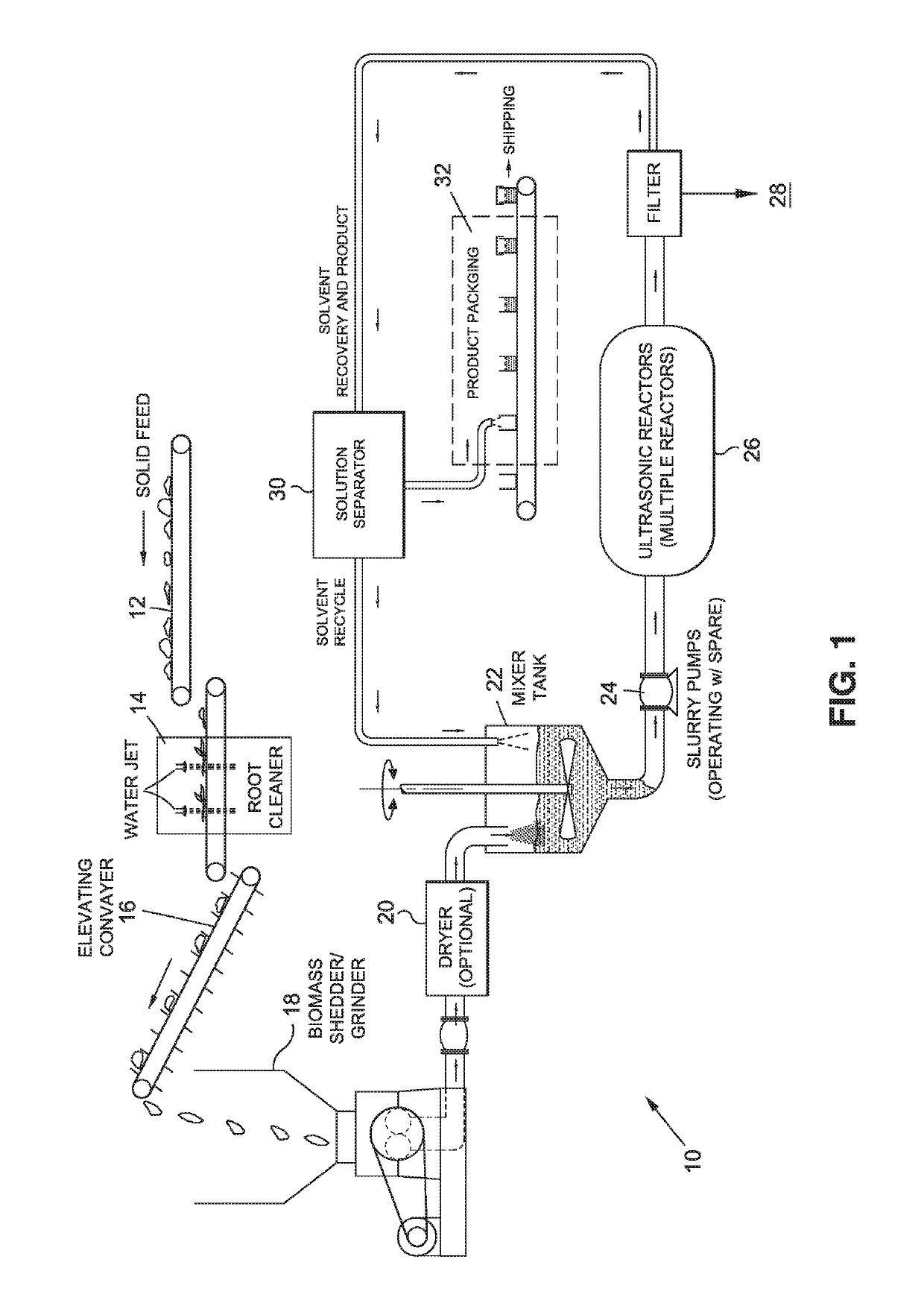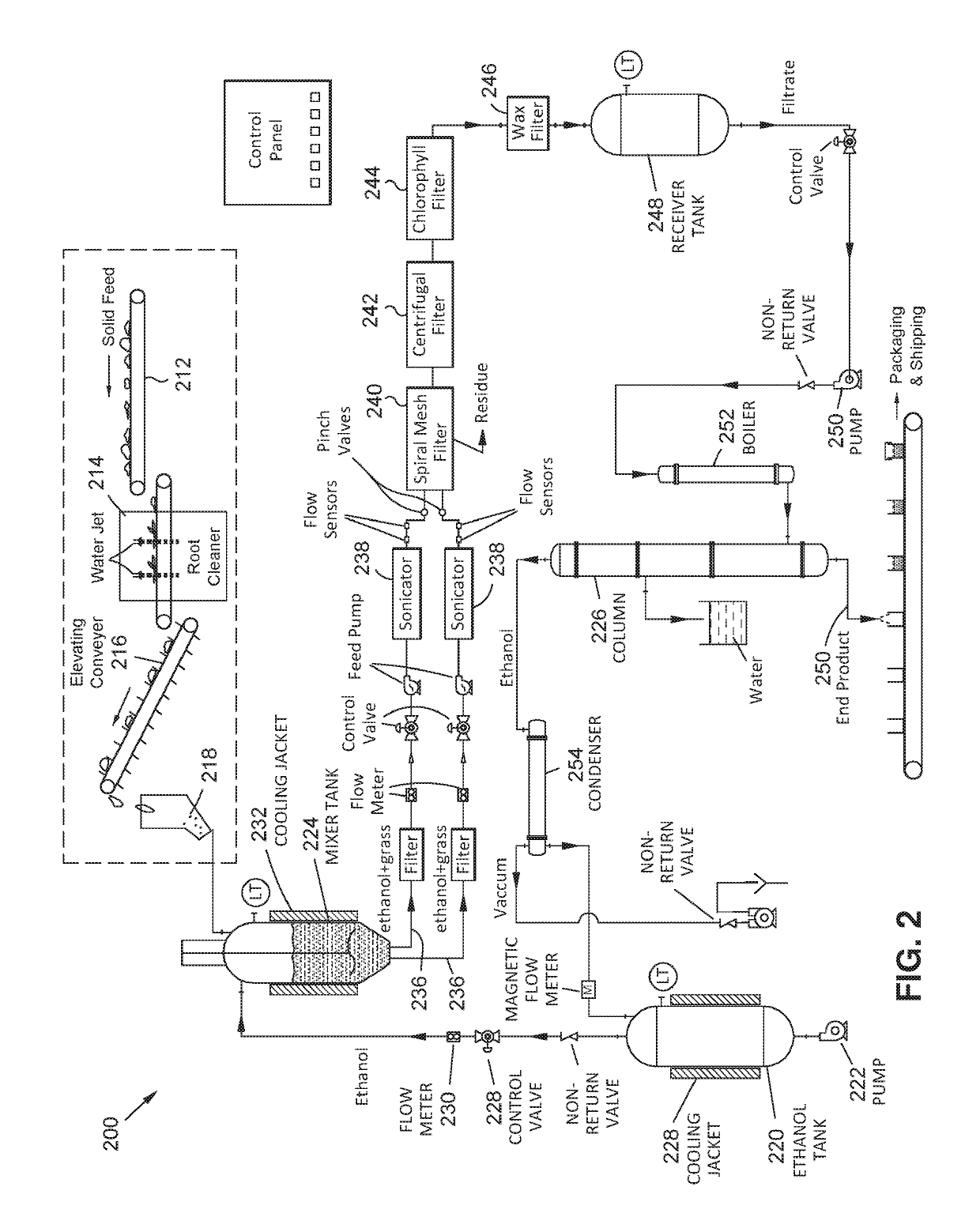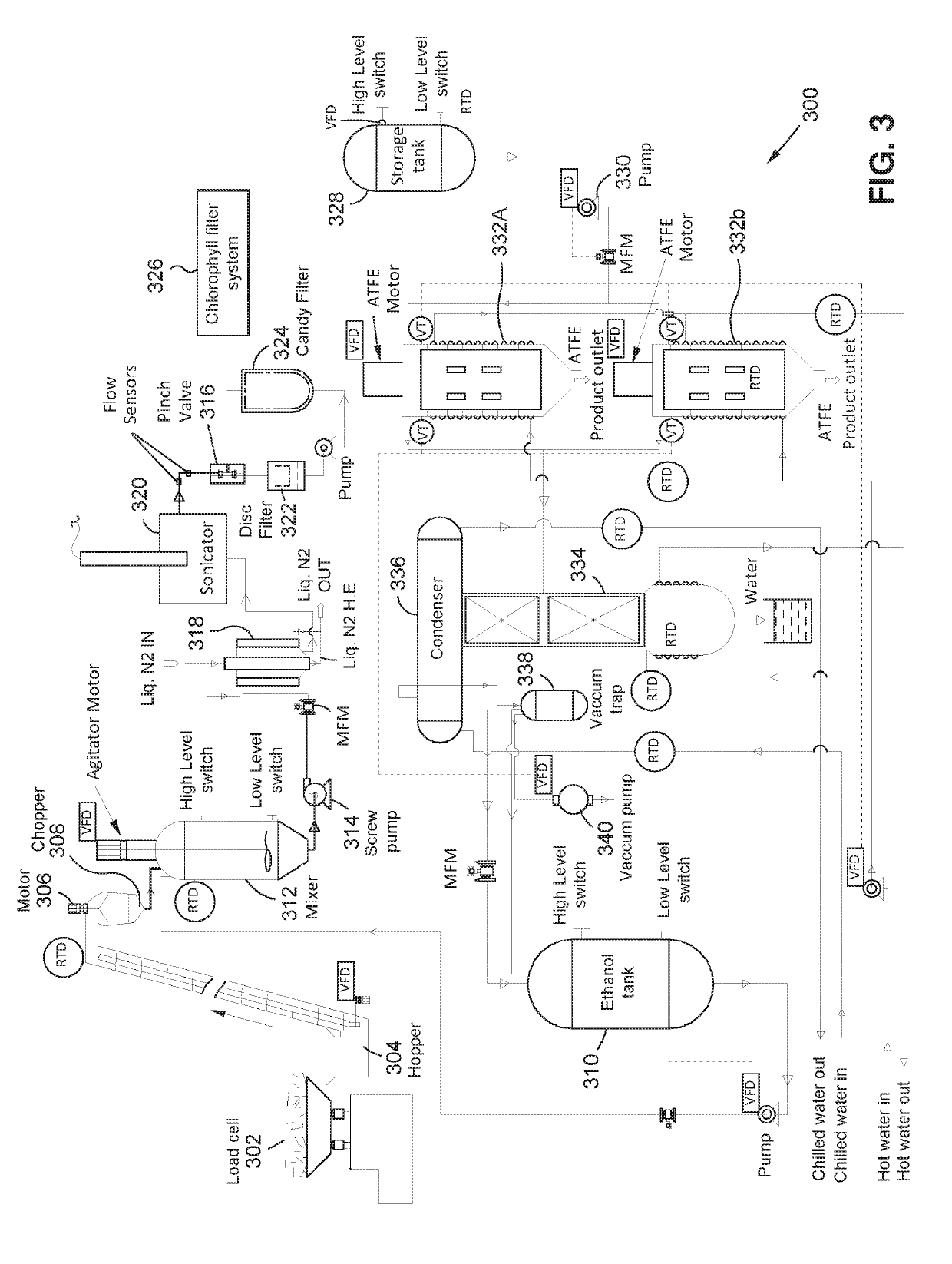Method for extracting compositions from plants
a composition and plant technology, applied in the field of composition extraction methods from plants, can solve the problems of large amount of chemical decomposition of sought-after cannabinoids, no commercially viable method for rapid and easy derivation of cannabinoid extracts, and the most effective performance of extracts requires substantial time and labor involving numerous steps, etc., to achieve efficient and effective derivation
- Summary
- Abstract
- Description
- Claims
- Application Information
AI Technical Summary
Benefits of technology
Problems solved by technology
Method used
Image
Examples
first embodiment
[0101]With respect to the various components referenced in FIG. 2, the same are listed below as utilized in connection with an ethanol-based solvent distillation system operative to derive extracts according to the present invention. As per the first embodiment discussed above, the system depicted in FIG. 2 is deemed exceptional at deriving not only extracts from cannabis, but also essential oils and fragrance-based compositions from plant materials as well. With respect to the various components shown and operatively interconnected to one another:
[0102]Ethanol tank 220: This is a stainless steel, pharmaceutical grade processing tank having a volume of approximately 2000 liters. Such tank will store ethanol, whereby a pump 222 is connected thereto to pump the required ethanol into a mixer tank 224. The ethanol tank 220 also receives the recovered solvent from the fractionating column (referenced as COLUMN 226), discussed more fully below. The ethanol tank 220 will preferably be fill...
third embodiment
[0122]In yet a further alternative third embodiment shown in FIG. 3, there is depicted system 300 for ultimately deriving the oil-based extracts other than through the boiler and recovery column as shown FIG. 2. In this regard, and as discussed more fully below, such alternative embodiment deploys a wiped film-type evaporator system whereby the filtered slurry, as may be optionally stored in a storage tank 328, is introduced into an Agitated Thin Film Evaporator (ATFE). The ATFE is operative to evenly distribute the filtered slurry over the ATFE's inner surface by an internal rotor. As the product spirals down the wall per gravitational pull, the high-speed rotor tip is operative to generate highly turbulent flow resulting in the formation of bow waves and creating optimum heat flux and mass transfer conditions. The water and ethanol that are present in the product feed are caused to evaporate via conductive heat transfer and ultimately caused to exit a vapor discharge section and t...
PUM
| Property | Measurement | Unit |
|---|---|---|
| displacement amplitude | aaaaa | aaaaa |
| particle size | aaaaa | aaaaa |
| particle size | aaaaa | aaaaa |
Abstract
Description
Claims
Application Information
 Login to View More
Login to View More - R&D
- Intellectual Property
- Life Sciences
- Materials
- Tech Scout
- Unparalleled Data Quality
- Higher Quality Content
- 60% Fewer Hallucinations
Browse by: Latest US Patents, China's latest patents, Technical Efficacy Thesaurus, Application Domain, Technology Topic, Popular Technical Reports.
© 2025 PatSnap. All rights reserved.Legal|Privacy policy|Modern Slavery Act Transparency Statement|Sitemap|About US| Contact US: help@patsnap.com



